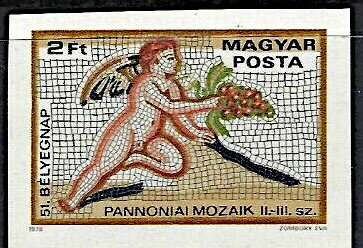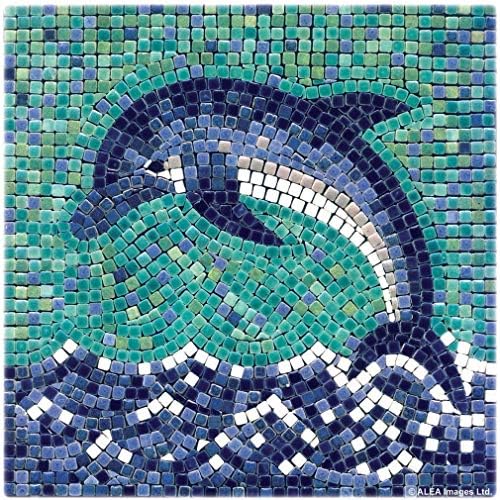Stamp: 51st Stamp Day - Roman Mosaics (Hungary 1978)
51st Stamp Day - Roman Mosaics (Hungary 1978)
16 September (Hungary ) within release Stamp Day goes into circulation Stamp 51st Stamp Day - Roman Mosaics face value 2 Hungarian forint
| Stamp 51st Stamp Day - Roman Mosaics in catalogues | |
|---|---|
| Michel: | Mi: HU 3310B |
| Philatelia Hungarica Catalog: | PHu: HU 3285V |
Stamp is square format.
Also in the issue Stamp Day:
- Stamp - 51st Stamp Day - Roman Mosaics face value 2;
- Stamp - 51st Stamp Day - Roman Mosaics face value 2;
- Stamp - 51st Stamp Day - Roman Mosaics face value 2;
- Stamp - 51st Stamp Day - Roman Mosaics face value 2;
- Souvenir Sheet - 51st Stamp Day - Roman Mosaics face value 10;
- Stamp - 51st Stamp Day - Roman Mosaics face value 10;
- Souvenir Sheet - 51st Stamp Day face value 10;
- Stamp - 51st Stamp Day - Roman Mosaics face value 10;
- Souvenir Sheet - 51st Stamp Day - Roman Mosaics face value 10;
- Souvenir Sheet - 51st Stamp Day - Roman Mosaics face value 10;
- Stamp - 51st Stamp Day - Roman Mosaics face value 2;
- Stamp - 51st Stamp Day - Roman Mosaics face value 2;
- Stamp - 51st Stamp Day - Roman Mosaics face value 2;
- Stamp - 51st Stamp Day - Roman Mosaics face value 2;
Stamp 51st Stamp Day - Roman Mosaics it reflects the thematic directions:
In Abrahamic religious traditions (such as Judaism, Christianity, and Islam) and some sects of other belief-systems like Hinduism and Buddhism, an angel is a heavenly supernatural or spiritual being. In monotheistic belief-systems, such beings are under service of the supreme deity (i.e. God).
Abrahamic religions often depict angels as benevolent celestial intermediaries between God and humanity. Other roles include protectors and guides for humans, such as guardian angels and servants of God.[3] Abrahamic religions describe angelic hierarchies, which vary by religion and sect. Some angels have specific names (such as Gabriel or Michael) or titles (such as seraph or archangel). Malevolent angels are often believed to have been expelled from Heaven and called fallen angels. In many such religions, the Devil (or devils) are identified with such angels
Art is a diverse range of human activities in creating visual, auditory or performing artifacts (artworks), expressing the author's imaginative or technical skill, intended to be appreciated for their beauty or emotional power. In their most general form these activities include the production of works of art, the criticism of art, the study of the history of art, and the aesthetic dissemination of art. The oldest documented forms of art are visual arts, which include creation of images or objects in fields including painting, sculpture, printmaking, photography, and other visual media. Architecture is often included as one of the visual arts; however, like the decorative arts, or advertising, it involves the creation of objects where the practical considerations of use are essential—in a way that they usually are not in a painting, for example. Music, theatre, film, dance, and other performing arts, as well as literature and other media such as interactive media, are included in a broader definition of art or the arts. Until the 17th century, art referred to any skill or mastery and was not differentiated from crafts or sciences. In modern usage after the 17th century, where aesthetic considerations are paramount, the fine arts are separated and distinguished from acquired skills in general, such as the decorative or applied arts.
In botany, a fruit is the seed-bearing structure in flowering plants (also known as angiosperms) formed from the ovary after flowering. Fruits are the means by which angiosperms disseminate seeds. Edible fruits, in particular, have propagated with the movements of humans and animals in a symbiotic relationship as a means for seed dispersal and nutrition; in fact, humans and many animals have become dependent on fruits as a source of food. Accordingly, fruits account for a substantial fraction of the world's agricultural output, and some (such as the apple and the pomegranate) have acquired extensive cultural and symbolic meanings. In common language usage, "fruit" normally means the fleshy seed-associated structures of a plant that are sweet or sour, and edible in the raw state, such as apples, bananas, grapes, lemons, oranges, and strawberries. On the other hand, in botanical usage, "fruit" includes many structures that are not commonly called "fruits", such as bean pods, corn kernels, tomatoes, and wheat grains. The section of a fungus that produces spores is also called a fruiting body.
A grape is a fruit, botanically a berry, of the deciduous woody vines of the flowering plant genus Vitis. Grapes are a non-climacteric type of fruit, generally occurring in clusters.
A mosaic is a pattern or image made of small regular or irregular pieces of colored stone, glass or ceramic, held in place by plaster/mortar, and covering a surface. Mosaics are often used as floor and wall decoration, and were particularly popular in the Ancient Roman world.
Philately (/fɪˈlætəli/; fih-LAT-ə-lee) is the study of postage stamps and postal history. It also refers to the collection and appreciation of stamps and other philatelic products.While closely associated with stamp collecting and the study of postage, it is possible to be a philatelist without owning any stamps. For instance, the stamps being studied may be very rare or reside only in museums.






